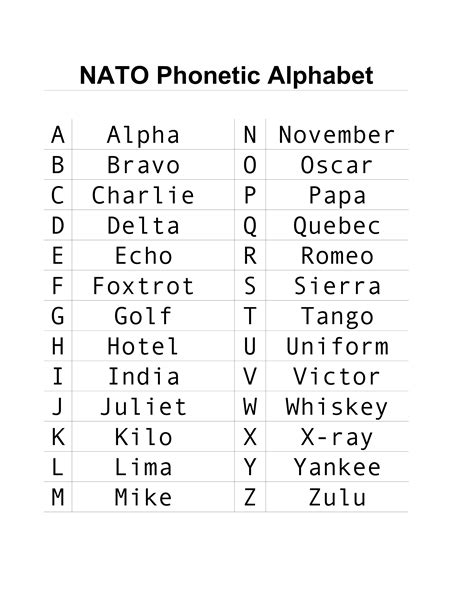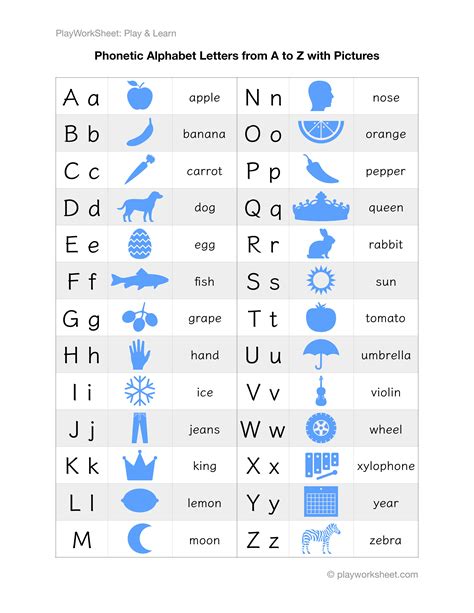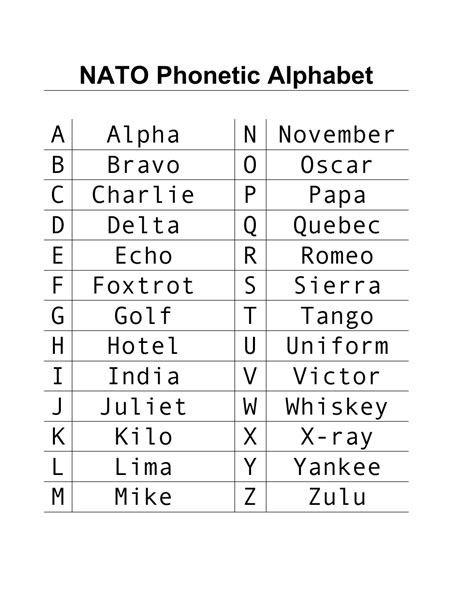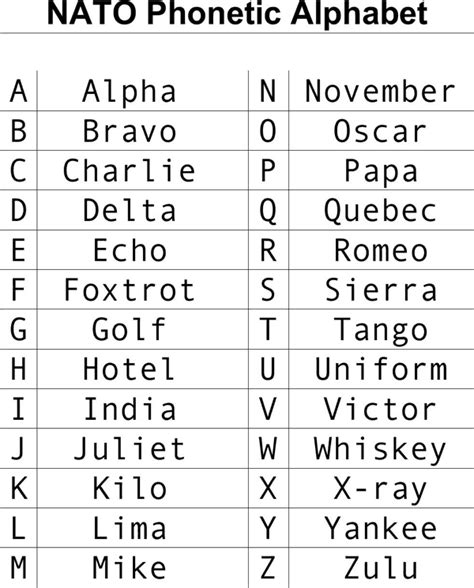Military Phonetic Alphabet Chart Made Easy

Understanding the Military Phonetic Alphabet

The military phonetic alphabet, also known as the NATO phonetic alphabet, is a standardized system used to clearly communicate letters and numbers in situations where standard letter pronunciation may be unclear. This system is widely used by military personnel, aviators, and other individuals who require precise communication.
Why is the Military Phonetic Alphabet Important?

The military phonetic alphabet is essential for clear communication in various situations, such as:
- Radio and phone communications
- Military operations
- Aviation
- Maritime communication
- Emergency services
Using the phonetic alphabet ensures that messages are conveyed accurately, reducing the risk of errors and miscommunication.
Military Phonetic Alphabet Chart

Here is the military phonetic alphabet chart, which includes the 26 letters of the alphabet, along with their corresponding phonetic words:
| Letter | Phonetic Word |
|---|---|
| A | Alpha |
| B | Bravo |
| C | Charlie |
| D | Delta |
| E | Echo |
| F | Foxtrot |
| G | Golf |
| H | Hotel |
| I | India |
| J | Juliet |
| K | Kilo |
| L | Lima |
| M | Mike |
| N | November |
| O | Oscar |
| P | Papa |
| Q | Quebec |
| R | Romeo |
| S | Sierra |
| T | Tango |
| U | Uniform |
| V | Victor |
| W | Whiskey |
| X | X-ray |
| Y | Yankee |
| Z | Zulu |

How to Use the Military Phonetic Alphabet

Using the military phonetic alphabet is straightforward. Simply replace each letter with its corresponding phonetic word. For example, if you want to communicate the word “CAT,” you would say “Charlie Alpha Tango.”
Here are a few examples:
- The word “HELLO” becomes “Hotel Echo Lima Lima Oscar.”
- The word “ABC” becomes “Alpha Bravo Charlie.”
Benefits of the Military Phonetic Alphabet

The military phonetic alphabet offers several benefits, including:
- Improved communication: The phonetic alphabet ensures that messages are conveyed clearly and accurately, reducing the risk of errors and miscommunication.
- Reduced confusion: The phonetic alphabet helps to eliminate confusion between similar-sounding letters, such as “B” and “P.”
- Increased efficiency: Using the phonetic alphabet can speed up communication, as individuals can quickly and easily convey complex information.
👍 Note: Practice using the military phonetic alphabet to become more comfortable and proficient in its use.
Common Applications of the Military Phonetic Alphabet

The military phonetic alphabet is widely used in various industries and situations, including:
- Aviation: Pilots and air traffic controllers use the phonetic alphabet to clearly communicate flight information, such as call signs and navigation coordinates.
- Maritime: The phonetic alphabet is used in maritime communication to clearly convey information, such as vessel names and navigation coordinates.
- Emergency services: Emergency responders, such as police and firefighters, use the phonetic alphabet to clearly communicate critical information during emergency situations.
- Military operations: Military personnel use the phonetic alphabet to clearly communicate tactical information, such as coordinates and call signs.
In summary, the military phonetic alphabet is a valuable tool for clear and accurate communication in various situations. By understanding and using the phonetic alphabet, individuals can improve communication, reduce confusion, and increase efficiency.
Now that you have learned about the military phonetic alphabet, you can apply this knowledge to improve your communication skills in various situations.
What is the purpose of the military phonetic alphabet?

+
The military phonetic alphabet is used to clearly communicate letters and numbers in situations where standard letter pronunciation may be unclear.
How is the military phonetic alphabet used?

+
The military phonetic alphabet is used by replacing each letter with its corresponding phonetic word. For example, the word “CAT” becomes “Charlie Alpha Tango.”
What are the benefits of using the military phonetic alphabet?

+
The military phonetic alphabet offers several benefits, including improved communication, reduced confusion, and increased efficiency.



